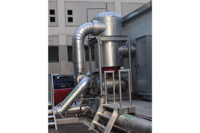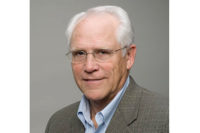The world we live in would not be the same if air conditioning weren’t available. Entire regions of the world would have remained undeveloped, sustaining minimal populations, if air conditioning hadn’t become a part of our lives.
Today air conditioning is rightly considered a necessity rather than a luxury. A good amount of economic activity, and hence progress, would not have been achieved without it. It is one of the key inventions sustaining modern life. In fact, the Encyclopaedia Britannica lists air conditioning as one of the greatest inventions of all time.
With air conditioning so essential, it helps to understand how it is provided via modern HVAC systems, and what the major differences are between the principal delivery systems: hydronics, air and refrigerant or direct expansion (DX) systems. Which system can provide the owner or the user of the system the most comfort for the least dollars in both first-cost as well as operating cost, regardless of a building’s size, configuration or climate setting?
And beyond cost, is one system better than the other in terms of attainable comfort levels, indoor air quality, energy use, and particularly in matters relating to safety and liability? This column and future ones will explore these issues.
Comparing systems
The three basic methods to provide comfort and move Btu around a building use water, air or refrigerant.
Air systems have been around for a long time. They were the first systems to provide cooling comfort from fans through evaporative cooling from a person’s skin thousands of years ago. Direct evaporative cooling appeared not long afterward. Fresco paintings from ancient Egypt depict slaves waving fans over containers of water. This appears to be the earliest recorded use of direct evaporative cooling.
Wealthy citizens of Rome during the Roman Empire had water circulated through their walls. The common people hung wet mats over their doors for cooling.
Cooling towers were constructed in medieval times. The towers were designed to trap wind and funnel it past water before it entered a building. This method is believed have to have been developed in Persia. Water evaporative cooling was used in New England textile mills during the 1800s.
Later this evolved into direct evaporative cooling or swamp coolers, used principally in the Southwest until the early 1960s. With the advent of mechanical cooling, the use of air conditioning in residences increased dramatically. In the 1960s, less than 30% of new homes were constructed with air conditioning. Today it is more than 90%.
Air distribution systems are generally less labor intensive to construct. However, they take up more space and require almost three times as much horsepower and three times as much material to move Btu around a building than a hydronic or refrigerant distribution system. This has a significant impact on the environment in higher energy consumption for the building and an impact on the global environment to mine, process and transport more materials to the site for the comfort distribution system.
A building with an all air-duct system can take up to several feet more in ceiling space then a hydronic or refrigerant distribution system, resulting in a taller building and again more materials to construct.
Hydronic water systems have long provided very comfortable and reliable heating and air conditioning, and they come with several major advantages: excellent indoor comfort (especially with multiple zones), lower energy costs and improved indoor air quality. Plus, new developments are occurring with hydronic-based chilled water systems. The popularity of radiant heat systems that now include a radiant cooling and chilled beam option is growing. The emergence of new single-pipe systems can dramatically lower the usually higher first costs of a hydronic system in comparison to an air or DX system.
New piping materials such as polypropylene are making their appearance, substantially reducing the labor penalty for piping distribution systems. Technology is available today to substantially reduce the amount of pumping energy for a hydronic distribution system. Using variable-speed drives will significantly reduce pump energy consumption, as will a single-pipe distribution system.
Refrigerant or DX systems have been around a shorter time than air or hydronic systems. These have typically been smaller split systems for residential and small commercial use. Larger commercial DX systems — variable refrigerant volume (VRV) and variable refrigerant flow (VRF) — are now gaining market share.
VRF has been called “another refinement of DX refrigerant split systems.” Unlike earlier versions of DX refrigerant split systems that employed multiple air-cooled condensers matched to a single evaporator and refrigerant lines, VRF systems typically use one large condenser, one set of refrigerant pipes for the entire building and a separate evaporator for each zone of temperature control. This is similar to a hydronic chilled water system, but with refrigerant pipe.
VRF systems have lower cooling energy costs than previous constant-speed refrigeration equipment because of the variable-speed operation of the compressors. Variable-speed systems of any kind (air, water or refrigerant) pump less mass flow resulting in less horsepower to move the fluid. In addition, at part load the heat exchanger is oversized for the lower mass flow rate since it was sized for full load and the system is more efficient.
There is some lower limit for reduced mass flow and turndown, at which point flow becomes laminar and heat transfer decreases. For refrigeration equipment, this is somewhere at about 25% part load.
The HVAC industry is now offering variable-speed refrigeration equipment for chillers, heat pumps and packaged equipment in addition to VRF equipment. All this equipment exhibits increases in efficiency at part loads similar to VRF equipment.
Although the first cost of a typical DX split system is lower than a hydronic distribution system, the first cost of VRF systems are more expensive because of the more complicated refrigerant management system and controls.
Most significantly, VRF systems use refrigerant, a toxic fluid and, in high enough concentrations, a lethal fluid. Mechanical codes have recognized this and set limits on the amount of refrigerant that can be discharged into a room to protect the occupants.
Since the Montreal Protocol, refrigerant manufacturers have moved away from use of CFCs such as R11/R12 to HCFCs and refrigerants such as R22. The newer refrigerants, such as R410 and R134A, have less impact on the environment, which is good, but they typically require higher pressures and more expensive materials. With rising energy and first costs, there’s a need for variable-speed technology to provide more attractive returns.
A different refrigerant, based on the principle of “water refrigeration,” is now being used in Europe. R718, or water vapor, is benign on both the environment and on building occupants but requires an expensive titanium compressor to be able to spin fast enough to achieve the higher pressures. Work on substituting a cheaper carbon-fiber plastic for titanium is under way in order to achieve higher efficiency at lower first costs.
Moving Btu around a building
Air systems use a fluid that is nontoxic and readily available: air. However, air systems use a fluid that has a low specific heat and low density. As a result, it takes more horsepower to move Btu around a building and distribute them in an occupied space with air than any other fluid. Air systems can take as much 40% of the total electrical demand, generation and distribution, for a cooling system just to move Btu.
While VRF refrigerant systems don’t take as much horsepower to move refrigerant around a building, they still have to distribute the Btu within the occupied space with something besides refrigerant. This typically requires local air handling units or fan coils to distribute Btu within a room. Refrigerant systems can take up to 30% of the total electrical demand of a cooling system to move the Btu.
Hydronic systems also use a fluid that is nontoxic and readily available: water. However, water is a denser fluid and has a higher specific heat than air. That allows it to move Btu around a building using less horsepower than with ducted air systems. In fact, it takes about one-third the horsepower to move Btu with water vs. air. This can be as low as 10% to 20% of the total electrical demand of a cooling system.
The science and technology behind hydronics has advanced to the point today where we can literally distribute Btu without any air movement. The problem with air movement from a comfort standpoint is the creation of evaporative cooling — it’s uncomfortable when air is blowing over our bodies.
Hydronic heating systems have been in place for a number of years that use radiation as the principal means of heat transfer, providing excellent comfort. The principal method of heat transfer from the hot water running through piping in the floor to your cold body above is radiation that requires very little air movement.
An emerging factor for hydronic chilled water systems is radiant cooling. Our European hydronic mentors have been working on radiant technology in reverse for about 30 years now using chilled beams, and this technology is being installed here in North America. With radiant cooling, piping installed in the ceiling has chilled water in it. Your warm body radiates to the chilled ceiling above to cool you down without moving air. Radiant cooling is an exciting feature that avoids some of the challenges with space-cooling distribution common to both air and refrigerant VRF-types of air-conditioning systems.
About the author: Greg Cunniff, P.E., is applications engineering manager for Cranston, R.I.-based Taco and a contributing author of the new textbook, Modern Geothermal HVAC Engineering and Controls Applications, McGraw Hill Professional, 2013. He can be reached at grecun@taco-hvac.com.



